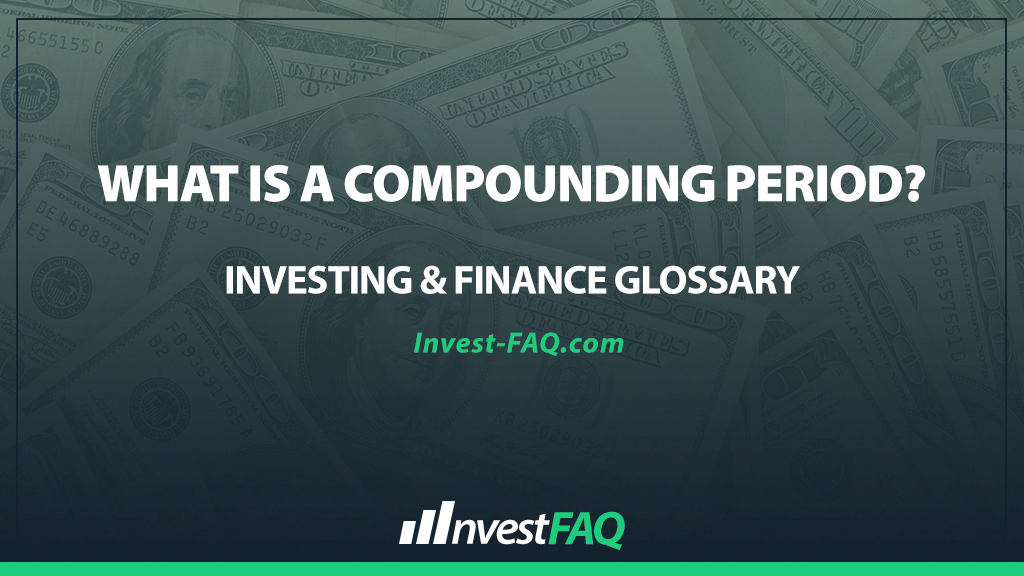
Compounding Period
Contents
A compounding period refers to the frequency at which interest is calculated and added to the principal amount of a deposit or loan. This period can be annual, semi-annual, quarterly, monthly, or even daily, directly influencing the amount of interest accrued over time.
In business finance, understanding and choosing the appropriate compounding period is crucial for both investors and borrowers.
For investors, it affects the growth rate of investments, while for borrowers, it impacts the total interest payable on loans.
Financial institutions and businesses carefully consider compounding periods when setting terms for savings accounts, investment products, and loans to optimize financial outcomes and meet strategic objectives.
Example of a Compounding Period
“Future Growth Mutual Fund” offers an investment account with an annual interest rate of 5%, compounded quarterly. An investor decides to invest $10,000 in this account. After one year, the interest calculation would be based on the quarterly compounding formula:
Principal (P): $10,000
Interest Rate (r): 5% annually or 1.25% quarterly (5% / 4)
Number of Compounding Periods (n): 4 times a year
Total Periods (t): 1 year
Using the formula A = P(1 + r/n)^(nt), where A is the amount of money accumulated after n periods, including interest:
A = $10,000(1 + 0.0125)^(4*1)
A = $10,000(1.0125)^4
A = $10,000 * 1.050945
A = $10,509.45
In this example, the compounding period significantly impacts the investment’s growth. Although the stated annual interest rate is 5%, the effective annual rate is higher due to quarterly compounding.
The investment grows to $10,509.45 after one year, which is $9.45 more than it would have earned with simple annual compounding. This demonstrates how the frequency of compounding can enhance the earning potential of investments or the cost of loans.
Significance for Investing & Finance
The concept of the compounding period holds considerable importance in accounting and finance for several reasons:
Interest Accumulation: It determines how quickly interest accumulates on investments or debts, affecting the overall return or cost.
Financial Planning and Analysis: Understanding compounding periods helps businesses and individuals make informed decisions about savings, investments, and borrowing.
Comparison of Financial Products: It allows for the accurate comparison of different financial products and loan offers, ensuring that decisions are based on comparable effective interest rates.
Investment Strategy: Investors can use knowledge of compounding periods to choose investment vehicles that align with their financial goals and risk tolerance.
In summary, the compounding period is a fundamental concept in finance that significantly influences the accumulation of interest on deposits and the cost of borrowing.
By carefully selecting or negotiating compounding periods, businesses and individuals can optimize their financial strategies and achieve better outcomes in their investment and borrowing activities.
FAQ
What defines a compounding period in the context of interest calculation?
A compounding period is the interval at which interest is calculated and added to the principal balance of an investment or loan, influencing the total amount of interest earned or paid over time.
How does the frequency of the compounding period affect the amount of interest accrued?
The more frequently interest is compounded within a year (e.g., monthly vs. annually), the greater the total interest accrued, due to the effect of earning interest on previously earned interest.
Can the compounding period differ from one financial product to another?
Yes, the compounding period can vary significantly between financial products, with common intervals including daily, monthly, quarterly, and annually, depending on the terms set by the financial institution.
What happens if you switch the compounding period for a loan or investment?
Changing the compounding period for a loan or investment can alter the amount of interest accrued or paid over the life of the product, potentially leading to higher earnings for savers or increased costs for borrowers.
